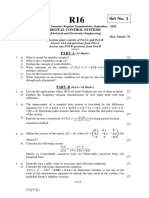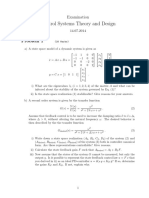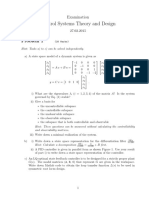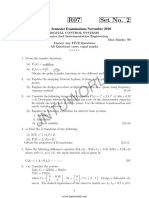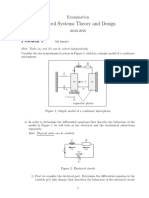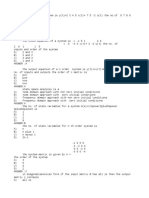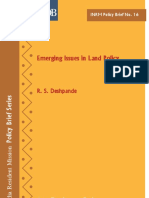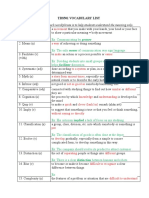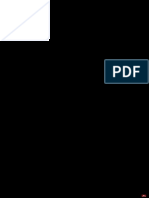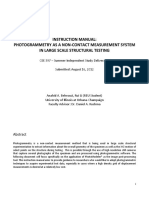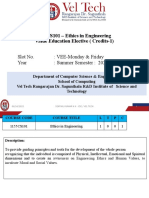DEDAN KIMATHI UNIVERSITY OF TECHNOLOGY
UNIVERSITY EXAMINATION 2018/2019
FIFTH YEAR MAIN EXAMINATION FOR THE DEGREE OF
BACHELOR OF SCIENCE IN ELECTRICAL AND ELECTRONIC ENGINEERING
EEE 2502 CONTROL ENGINEERING III
Instructions
This examination paper contains five questions. Attempt question one and any other two
questions. Question ONE is compulsory and carries 30 marks. All the other questions carry
20 marks each.
QUESTION ONE
a) Define the following terms as used in state space representation of control system 3 mks
i. State variables
ii. State
iii. State space
b) Obtain the state space representation of the system described by
2𝑑3 𝑦 7𝑑2 𝑦 3𝑑𝑦
+ + = 4𝑢
𝑑𝑡 2 𝑑𝑡 2 𝑑𝑡
2𝑑𝑦
The output equation is given as + 3𝑦. 3mks
𝑑𝑡
c) Find the state and output equation for the positional servomechanism shown in Figure below
when the state and control variables are 𝑥1 = 𝑐 𝑡 , 𝑥2 = 𝑥1 , 𝑢 = 𝑟(𝑡) 3mks
EEE2502 Page 1
� d) For the RCL network shown below, write down the state equation with the state variables as v2
and 𝑖(𝑡) 3mks
4 1
e) Determine the eigenvalues and eigenvectors of the state matrix 𝐴 = .
4 4
Show that the eigenvalues are invariant under a similarity transformation. 5mks
f) Given that
2𝑧 3 + 𝑧
𝑋 𝑧 = 2
𝑧−1 𝑧−2
Obtain the inverse Z transform of 𝑋 𝑧 5 mks
g) A system is described by the following state equations
0 1 𝑥1 𝑡 0 𝑥1 (𝑡)
𝑥 𝑡 = + 𝑢 𝑡 , 𝑦(𝑡) = 1 0
−10 −7 𝑥2 𝑡 1 𝑥2 (𝑡)
i. Determine whether the system is controllable and/or observable. 1 mks
1
ii. Given that 𝑢 𝑡 is a unit step and 𝑥 0 = determine the state transition matrix and
0
solve for 𝑥 𝑡 7 mks
QUESTION TWO
a) Transform the following transfer function into; 6mks
𝑠3 + 𝑠 + 3
𝑠 3 + 5𝑠 2 + 8𝑠 + 4
i) Observable canonical form
ii) Diagonal canonical form
b) Given the matrix
3 −3 2
𝐴 = −1 5 −2
−1 3 0
i. Obtain the Eigenvalues and Eigenvectors of matrix A
EEE2502 Page 2
� ii. Obtain the transformation matrix P that will transform the matrix A without changing its
characteristic equation. Verify your answer. 14 mks
QUESTION THREE
a) Given 7mks
𝑥1 = 0 1 𝑥1 0
+ 𝑢
𝑥2 −25 −6 𝑥2 1
0
𝑥(0) =
1
Determine the state transition matrix hence obtain the time response i.e. x(t) for the system
0 1 0 0
b) Consider the system 𝑥 = 𝐴𝑥 + 𝐵𝑢 where 𝐴 = 0 0 1 and 𝐵 = 0 . The system uses
−1 −7 −9 1
state feedback control law 𝑢 = 𝐾𝑥. It is desired to have closed loop poles at 𝑠 = −3 ±
𝑗4 𝑎𝑛𝑑 𝑠 = −5. Determine the state feedback matrix K using the Ackermann’s formulae
(show all your workings) 8mks
c) Given the characteristic equation
𝑃 𝑧 = 𝑧 6 + 5.7𝑧 5 + 3.2𝑧 4 + 𝑧 3 − 1.3𝑧 2 − 0.08𝑧 + 0.24
Determine the stability of the system using Jury’s stability test 5 mks
QUESTION FOUR
a) Consider the closed loop system shown below whose controller gain K is unity. Determine
R(s) C(s)
Y(s)
K 1 − 𝑒 −𝑠 1
𝑠+2 1 𝑠 𝑠+21
i. Open loop pulse transfer function
ii. Closed loop pulse transfer function
iii. Difference equation for the discrete time response
iv. Stability of the system using Routh Hurwitz criterion 20mks
EEE2502 Page 3
� QUESTION FIVE
a) Obtain the state space representation of the system described by the differential equation
𝑑2 𝑦 𝑑𝑦
𝑑𝑡2
+ 2 𝑑𝑡 + 5𝑦 = 𝑢
2 mks
0 1 0 0
b) Consider the system 𝑥 = 𝐴𝑥 + 𝐵𝑢 where 𝐴 = 0 0 1 , 𝐵 = 0 and 𝐶 = [0 0 1].
−1 −7 −9 1
Design a full order state observer using the Ackermann’s formulae assuming the desired
eigenvalues of the observer matrix are at 𝑠 = −4 ± 𝑗5 𝑎𝑛𝑑 𝑠 = −3, (show all your workings)
8mks
c) For the linear system given below , assume the output y can be accurately measured.
0 1 0 0
𝑥= 0 0 1 𝑥+ 0 𝑢
−1 −7 −9 1
𝑦= 0 0 1𝑥
Determine the minimum state observer gain Ke such that the closed loop poles are 𝑠 = −3 ± 𝑗1
10 mks
EEE2502 Page 4









